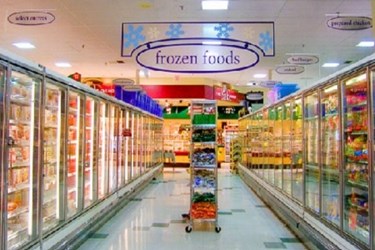Complying With HARPC: A Must For The Frozen-Foods Sector
By Melissa Lind, contributing writer

The Food Safety Modernization Act is requiring a major overhaul in most sectors of the food industry. As the focus shifts from reaction to prevention regarding food-safety events, one area that is facing significant changes is the frozen-food sector.
The Food Safety Modernization Act (FSMA) aims to prevent food-contamination events before they occur, rather than reacting to them. Part of this change has been the requirement of a Hazard Analysis and Risk-Based Preventive Controls (HARPC) plan for frozen-food manufacturers.
Frozen-food manufacturers must establish and maintain a qualifying HARPC plan which identifies food-safety and adulteration risks specific to their food products and facility. Procedures must be established to minimize those risks, verify that controls of those risks are actually working, and provide for corrective actions if deviations occur. Maintenance on the plan is required to review and verify procedures with appropriate documentation, updating it as needed.
However, some food-industry sectors do not have to adhere to HARPC requirements, including:
- Makers of products regulated by the USDA, such as meat and poultry
- Makers of products regulated under Standards for Produce Safety, mainly produce handling by farm producers
- Most seafood and juice manufacturers who complied with HACCP regulations
- Most canned food processors, however, there are some exceptions
- Manufacturers and processors with an average product value of less than $500,000 as determined by a three-year average
- Small and very-small businesses (with size and definition to be determined by FDA)
In other words, if you are a medium- or large-sized frozen-food processor that isn’t solely focused on meat, you are required to follow HARPC regulations. Failure to do so can result in public warning and disclosure by the FDA. It may also result in criminal charges for the company and owner.
Some frozen-food manufacturers and processors have already shifted focus to comply with HAACP recommendations. Though that won’t be sufficient for most, it is a step in the right direction and HARPC conversion may not be as challenging. Requirements are more-stringent, but the foundation is similar. The FDA has stated that educational programs will be made available, particularly to smaller organizations in need of HARPC plans.
If you are subject to HARPC, like almost every business in the frozen-food sector, your company’s HARPC plan must address:
- Identification of potential hazards for your company’s products, including:
- Naturally introduced hazards, such as toxins, allergens, and microorganisms
- Unintentionally introduced hazards, such as unsafe food dyes, handling practices, or processing techniques
- Intentionally introduced hazards, such as intentional contamination due to terrorism or even disgruntled workers
- Identifying critical control points (CCPs) at which hazards can be minimized, such as:
- Sanitation of equipment at food contact locations
- Staff training regarding hygiene
- Pathogen-monitoring programs
- Allergen-control practices
- Good Manufacturing Practices (cGMP)
- Vendor verifications
- Recall plans
- Develop and document monitoring programs that ensure preventative controls are followed.
- Develop and utilize corrective action plans for deviations, including documentation of what, why, how, and what has changed to prevent future occurrences. Deviation and corrective action documentation should include items, such as:
- Identification of inadequate control points or systems
- Identification of new or undefined hazards
- Steps taken to reduce chances of recurrences
- Evaluation of processed food for safety issues, including testing results
- Documentation of prevention of food threat entering public market
